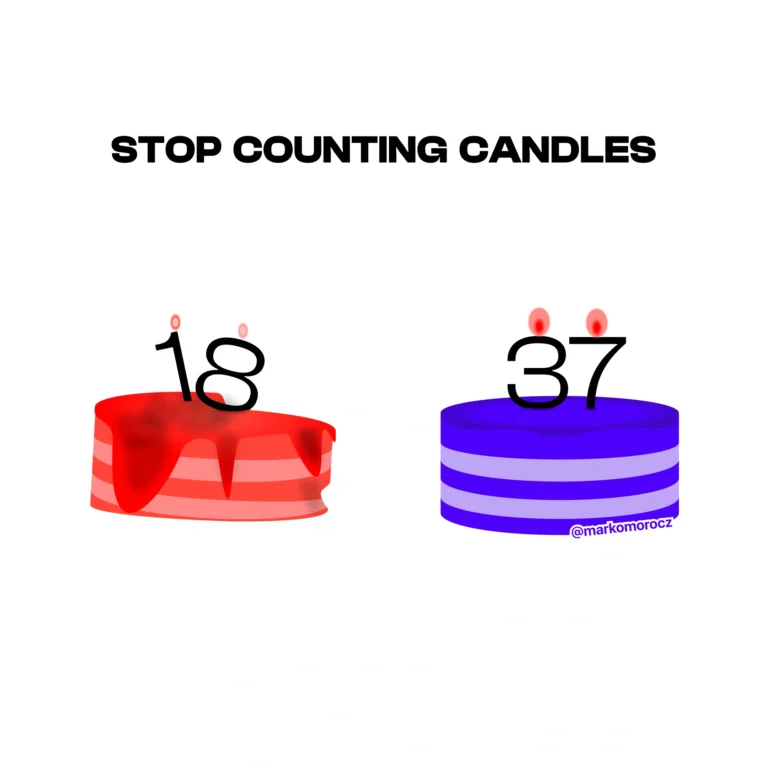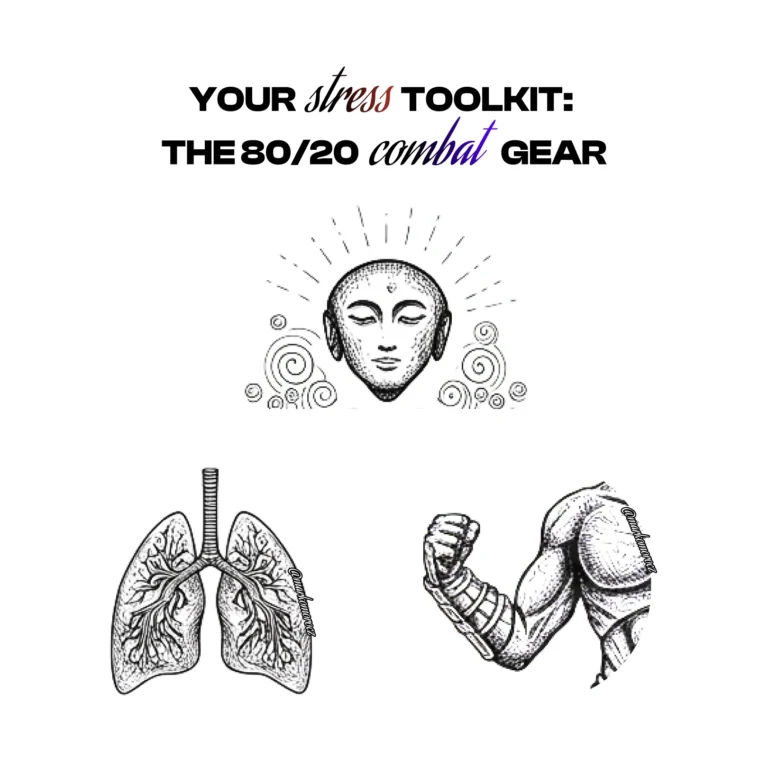Stability: The Foundation That Controls Everything
Everybody wants to lift heavy. Run fast. Look jacked.
Nobody wants to work on stability.
That’s like building a mansion on quicksand. Looks impressive until the first storm hits.
Then? Total collapse.
Stability isn’t glamorous. It doesn’t pump your muscles or flood Instagram with likes. But ignore it? You’re building a time bomb in your body.
Here’s the uncomfortable truth: Every single injury I see in people over 40 traces back to poor stability.
The blown backs. The torn shoulders. The knee surgeries. All preventable.
All traced back to bodies that forgot how to stabilize before they mobilize.
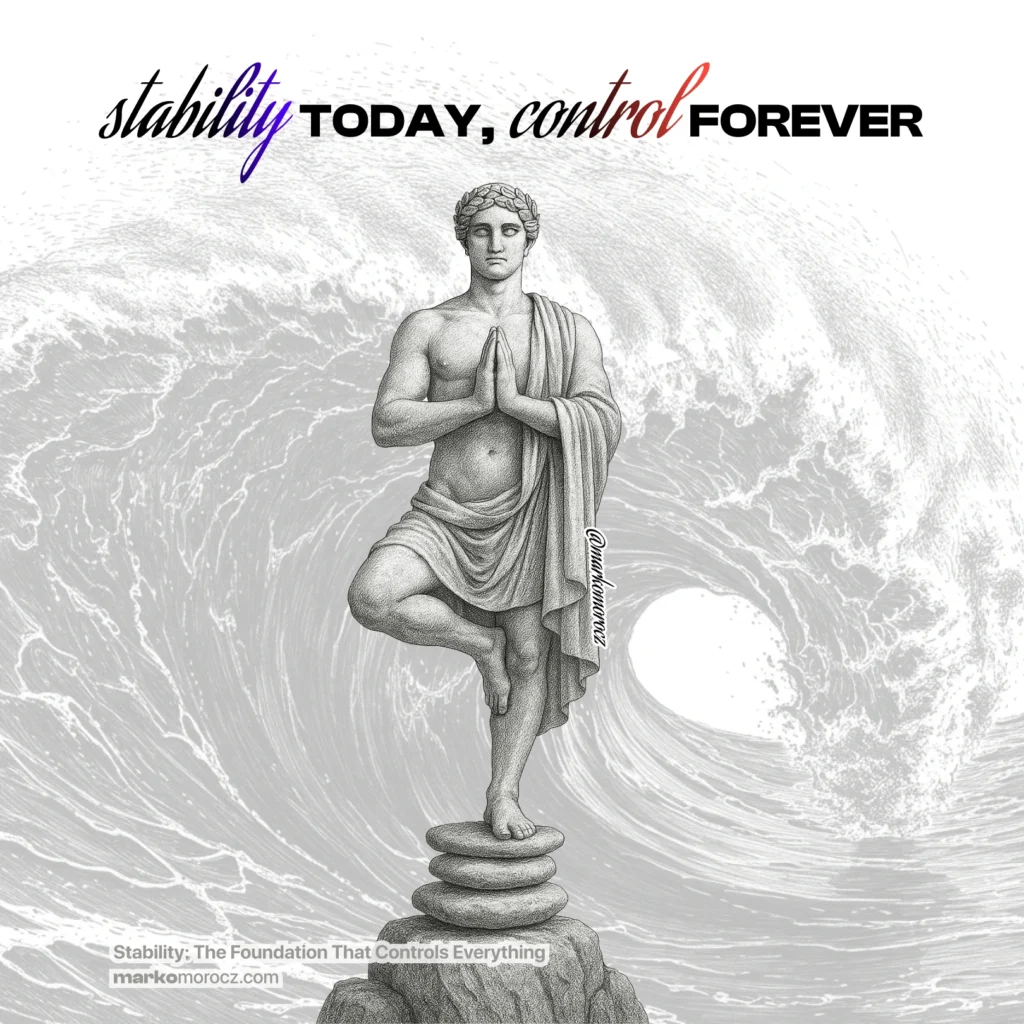
You Were Born Perfect (Then Life Ruined You)
Watch a toddler squat. Perfect form. Spine neutral. Weight centered. Breathing synchronized.
No coach needed. No YouTube tutorial. Just pure, natural movement.
Fast forward 30 years. That same human can’t touch their toes without groaning. Can’t squat without knees screaming. Can’t breathe properly if their life depended on it.
What happened?
School happened. Eight hours of sitting. Spinal curves got compromised.
Chairs happened. Hip flexors turned to concrete. Glutes went dormant.
Screens happened. Forward head position. Shoulders rolled. Core forgot its job.
You traded your birthright movement patterns for modern convenience.
Time to reclaim them.
The DNS Revolution: Relearning Baby Movement
Dynamic Neuromuscular Stabilization sounds complex. It’s not.
It’s literally relearning what you knew at age one.
The concept is brilliant: Every human develops through identical movement milestones. These patterns are hardwired into our DNA. We just need to remember them.
The baby developmental blueprint:
- 3 months: Head control and breathing
- 4.5 months: Rolling patterns
- 6 months: Sitting stability
- 7 months: Crawling preparation
- 9 months: Quadruped locomotion (using for limbs to move)
- 12 months: Standing and walking
Each stage builds on the last. Skip one? The whole system corrupts.
Most adults are stuck somewhere between 3 and 6 months developmentally. Their bodies work, but they are like a computer running on safe mode.
Time to install the full operating system.
Breathing: The Foundation Everyone Ignores
Before you touch a weight. Before you run a step. Before you do anything.
Learn to breathe properly.
99% of people breathe like they’re being chased. All day. Every day.
Chest breathing. Neck muscles firing. Shoulders elevating. Stress response constantly activated.
Proper breathing creates:
- Intra-abdominal pressure (your internal weight belt)
- Spinal stability (protection from injury)
- Parasympathetic activation (recovery mode)
- Optimal muscle activation patterns
The 90/90 breathing reset:
- Lie on back, feet on wall, knees and hips at 90 degrees
- Lower back flat on ground
- Breathe in through nose for 4 counts (expand ribs 360 degrees)
- Pause for 2 counts
- Exhale through mouth for 6 counts (ribs down and in)
- Pause for 2 counts
- Repeat for 5 minutes
This isn’t meditation. It’s reprogramming your nervous system.
The Core Truth Nobody Tells You
Your “core” isn’t your six-pack. That’s just the paint job.
True core stability comes from four players working as one:
- Diaphragm (the ceiling)
- Pelvic floor (the floor)
- Transverse abdominis (the corset)
- Multifidus (the spine supporters)
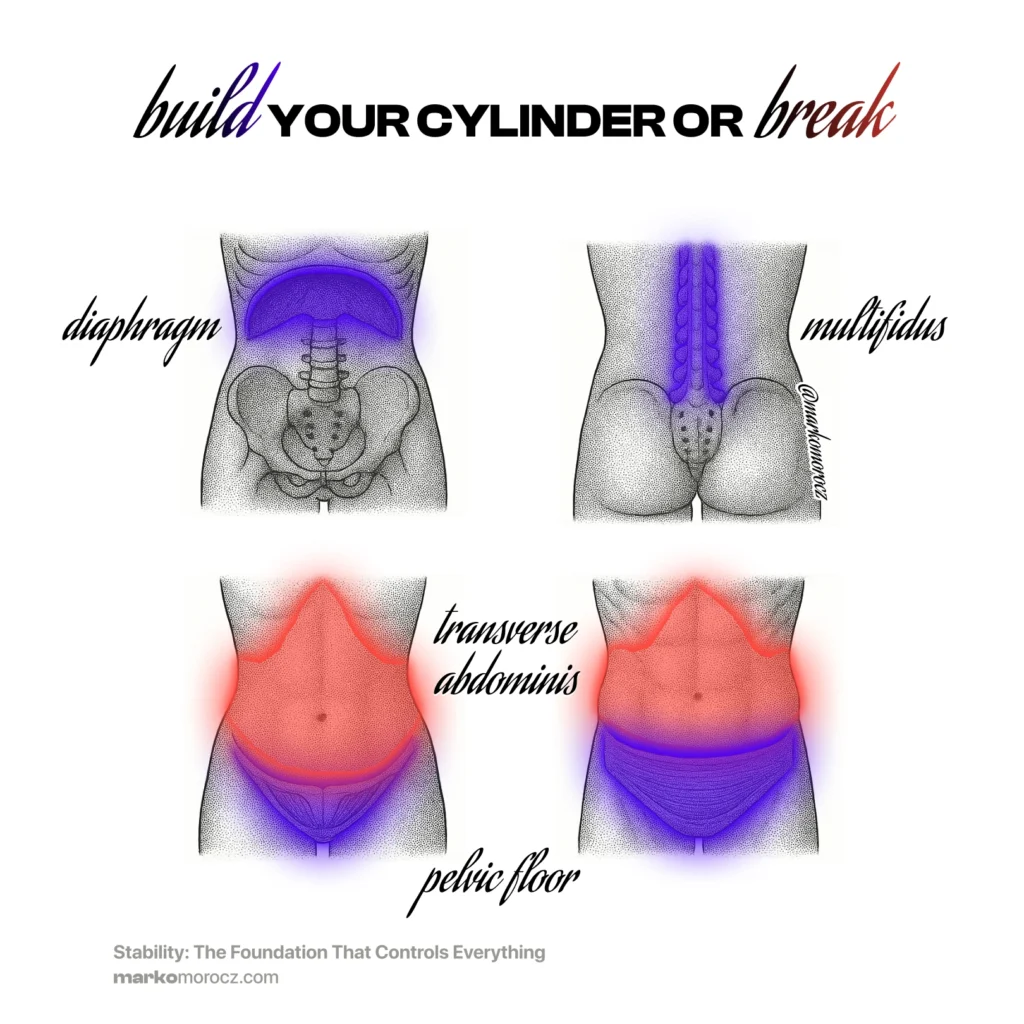
These create a cylinder of pressure. When they work together, you’re unbreakable. When they don’t, you’re a physical therapy patient waiting to happen.
McGill’s Big 3 for bulletproofing:
- Bird Dog (10 reps each side, 10-second holds)
- Side Plank (3 x 30-60 seconds each side)
- Curl-Up (3 x 10 reps, 10-second holds)
Simple? Yes. Boring? Perhaps. Effective? Devastatingly so.
Dr. Stuart McGill used these to rehabilitate broken backs that surgeons gave up on1. They’ll work for you.
Foot Function: Your Forgotten Foundation
Your feet have 26 bones, 33 joints, and over 100 muscles.
Most people use about 10% of that potential.
Weak feet create a cascade of dysfunction:
- Collapsed arches → knee valgus
- Stiff toes → poor balance
- Weak intrinsics → plantar fasciitis
- Limited mobility → ankle injuries
Toe Yoga Prescription:
- Big toe isolation: Lift only big toe, 10 reps
- Little toe isolation: Lift other four toes, 10 reps
- Piano playing: Individual toe control
- Spreading: Maximum toe splay, hold 10 seconds
- Short foot: Create arch without curling toes
Do this while brushing teeth. Two minutes, twice daily. Your feet will thank you at 80.
The Stability Training Hierarchy
Building stability isn’t random. It’s systematic.
Level 1: Static Stability (Months 1-2)
- Breathing patterns
- Basic core activation
- Foot strengthening
- Joint mobility
Level 2: Dynamic Stability (Months 3-4)
- Crawling patterns
- Rolling patterns
- Bird dogs and dead bugs
- Single-leg stands
Level 3: Loaded Stability (Months 5-6)
- Carries (farmer’s, overhead, unilateral)
- Turkish get-ups
- Pallof presses
- Anti-rotation work
Level 4: Reactive Stability (Ongoing)
- Perturbation training
- Landing mechanics
- Change of direction
- Sport-specific patterns
Skip levels at your own risk. This isn’t a race.
The Turkish Get-Up: One Move To Rule Them All
If I could only do one exercise for the rest of my life, it would be the Turkish get-up.
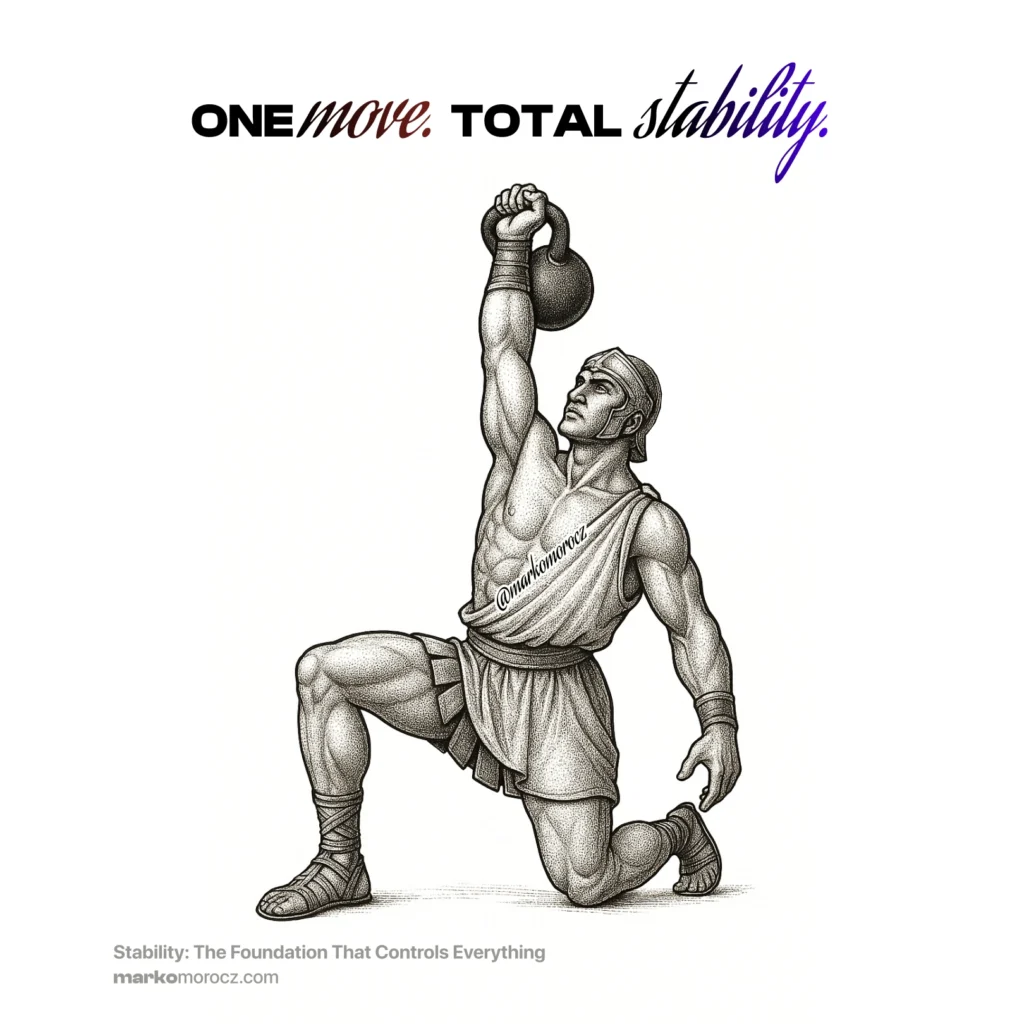
This 200-year-old movement is stability training perfected:
- Shoulder stability through full range of motion
- Core control in all planes
- Hip mobility and stability
- Single-leg strength
- Cognitive challenge
Start unloaded (no weight). Perfect every transition. Add load only when it’s flawless.
The goal? Half your bodyweight. Sounds impossible? I’ve seen 70-year-olds achieve it.
The Longevity Carries: Walk Your Way To Stability
Carries are the most underrated exercise in existence.
They build:
- Core stability under load
- Grip strength (proxy for longevity2)
- Postural endurance
- Mental toughness
- Real-world strength
The Essential Carry Variations:
- Farmer’s Walk: Dumbbells at sides. Goal: bodyweight for 60 seconds.
- Suitcase Carry: One side loaded. Anti-lateral flexion.
- Overhead Carry: Weight overhead. Shoulder stability supreme.
- Mixed Carry: One weight up, one down. Total body challenge.
Start with 30 seconds. Build to 2 minutes. Watch your entire body transform.
Balance Training: Your Fall Prevention Insurance
Falls kill more people over 65 than many cancers3.
Let that sink in.
Your balance peaks at 20. By 60, you’ve lost 50% without training. By 80? You’re a walking risk.
Progressive Balance Protocol:
- Two feet, eyes closed: 60 seconds
- Single leg, eyes open: 30 seconds each
- Single leg, eyes closed: 15 seconds each
- Single leg, head turns: 10 reps each direction
- Single leg, unstable surface: 30 seconds
Do this daily. Literally while brushing teeth. It’s free fall insurance.
The Mobility-Stability Marriage
Mobility without stability is dangerous. Stability without mobility is limiting.
You need both. In the right order.
First: Build stability at current range.
Then: Expand range gradually.
Always: Control what you expose.
The formula? Mobility = Flexibility + Strength
Flexible but weak? Injury waiting. Strong but stiff? Injury waiting. Mobile? Now we’re talking.
Red Flags You’re Unstable
Your body whispers before it screams. Listen:
- Chronic joint pain (especially low back)
- Difficulty with single-leg activities
- Poor balance with eyes closed
- Breathing predominantly through chest
- Inability to maintain good posture
- Frequent minor injuries
- Feeling “weak” despite being strong
Ignore these? Pay later with compound interest. I did. You don’t have to.
The 6-Month Stability Investment
Six months. That’s what I’m asking.
Six months of foundational work before you chase heavy weights or marathon times.
Will people understand? No. Will your ego hate it? Yes. Will it save your next 50 years? Absolutely.
The payoff:
- Injury risk drops 70%4
- Strength gains accelerate 40%5
- Movement quality transforms
- Chronic pain disappears
- Athletic performance explodes
This isn’t about being careful. It’s about being intelligent.
Your Daily Stability Practice
Morning (5 minutes):
- 90/90 breathing
- McGill Big 3
- Toe yoga
Pre-workout (5 minutes):
- Dynamic stability drills
- Movement preparation
- Core activation
Throughout day:
- Single-leg stands while waiting
- Breathing checks hourly
- Posture resets
Evening (5 minutes):
- Balance challenges
- Gentle stability holds
- Recovery breathing
Twenty minutes daily. That’s all.
The Bottom Line
Stability work isn’t glamorous. But neither is losing your independence at 100.
This is the foundation everything else builds on. The insurance policy you buy with sweat, not money.
Every professional athlete does this daily. Every physical therapist preaches it. Every longevity expert demands it.
Yet most people skip it for another bicep curl.
Don’t be most people.
Build your foundation so deep that aging needs a jackhammer to crack it.
Your future self—the one still crushing life at 100—will thank you.
Stability today. Control forever.
Got insights or burning questions about stability training? Drop them below—I’d love to hear your take!
References
- McGill S. (2015). “Back Mechanic: The step-by-step McGill Method to fix back pain.” Backfitpro Inc. ↩︎
- Leong DP, et al. (2015). “Prognostic value of grip strength: findings from the Prospective Urban Rural Epidemiology (PURE) study.” Lancet, 386(9990), 266-273. ↩︎
- Burns ER, et al. (2016). “The direct costs of fatal and non-fatal falls among older adults — United States.” Journal of Safety Research, 58, 99-103. ↩︎
- Lauersen JB, et al. (2014). “The effectiveness of exercise interventions to prevent sports injuries: a systematic review and meta-analysis of randomised controlled trials.” British Journal of Sports Medicine, 48(11), 871-877. ↩︎
- Schoenfeld BJ, et al. (2015). “Effects of Low- vs. High-Load Resistance Training on Muscle Strength and Hypertrophy in Well-Trained Men.” Journal of Strength and Conditioning Research, 29(10), 2954-2963. ↩︎

